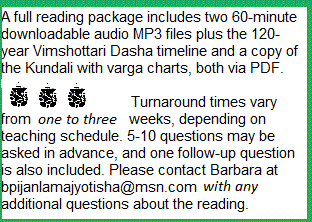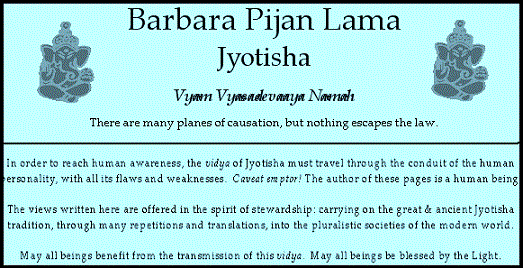
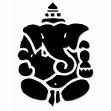
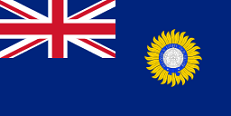
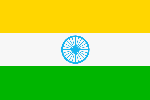
born 12 months after
-
Russ-Soviet 1878-1953 Man-of-Steel Josef Stalin
born 9 months after
-
Theory of Relativity 1879-1955 Physics Albert Einstein
born 6 months before
-
Telepathy 1880-1949 esoterica Alice Bailey
“ Realisation is not acquisition of anything new nor is it a new faculty. It is only removal of all camouflage.”
― Ramana Maharshi
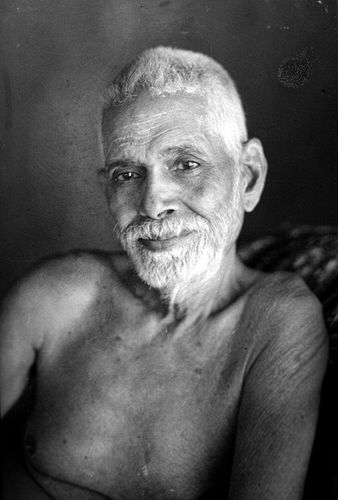
Shri Ramana Maharishi in 1948 [age 69]
Poet
Hymn-writer
Builder
Spiritual Explainer of Self-Enquiry
Bhagavan Shri
Ramana Maharshi
Arunachala
a.k.a. Venkataraman Iyer
Earth-birth Wednesday-30-Dec-1879
dematerialization 14-Apr-1950 [age 70]
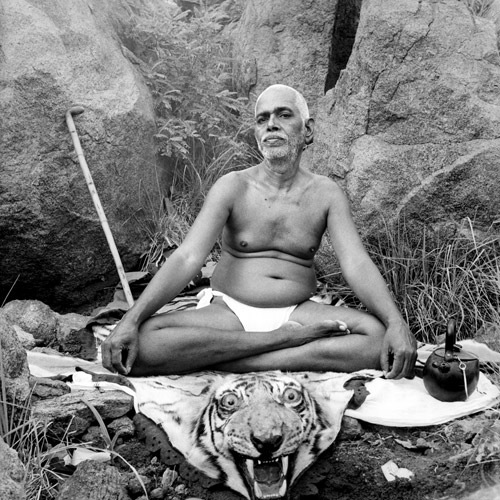
Sri Ramana Maharshi sitting on a tiger skin, undated but likely during the early 1940's. https://www.arunachala-ramana.org/photos/restored_photos/sos_08.htm

Poet - Songwriter
Builder
Philosopher of Self-inquiry
Spiritual Guide in the tradition of Advaita Vedanta
1879-1950
Sri Ramana Maharshi
birth data from https://en.wikipedia.org/wiki/Ramana_Maharshi
tentativelyrectified by BP Lama
Jyotishavidya
charts + graphs + tables = generated by Shri Jyoti Star - www.vedicsoftware.com
- adapted by BP Lama
see also BV Raman's version of this nativity in Notable Horoscopes, p.249
Rising Nakshatra
Masculine Nativities
Iswara - Utaraztha - Visve-deva - Uthiradaam - Aadi
BPL commentary
For Uttarāṣāḍha births of a masculine valence, the condition of radiant, romantic, intelligent, creative, idealistic, central, confident, gaming, self-reflexive, pitrikaraka Surya may considerably affect the outcome.
For those born into the Surya-ruled paradigm of Iswara, father-figures, politicians, celebrity, royalty, entitled roles, brilliant dramatists, radiant deities, sparkling genius, glittering creativity, intelligentsia, speculators, poets, romantic lovers, gamblers, and game-players may be especially influential.
Instructional guidance is provided by emissaries from the civilizations of Nunki. Their purpose is to express the radiant clear light of truth in an orderly, institutional framework.
Psychic intelligence
Dhanus-Pada-1
can show Brihaspati's rulership of 1-embodiment + 4-cultural foundations. nakshatra-pati Suyra and Guru enjoy high-compatibility yang patterns.
Pada-1 tends to be paternalistic , politically savvy, self-referential to the point of self-righteousness, and generous of spirit. Iconic and inspirational teachers of the patriarchal lineages are found here.
Often found in the role of philosopher, professor, priestly ideologue, or guru-figure. Assess the role of Brihaspati to determine the degree of optimism and alignment with the prevailing doctrine.
...Themes of clairsentient vision, personal certainty, and prophecy may contextualize Ishwara's terrestrial experience. Also applies to Chandra in Uttarāṣāḍha .
QUOTATION Uttarāṣāḍha
from Shil-Ponde. [1939). Hindu Astrology Joytisha-Shastra. p 87
" A very good, honest, and sincere character...
A peace loving disposition.
-
Very intelligent and wise.
-
Respected and liked by everyone with whom he comes in contact.
Eager to live and let live.
-
Tolerant to others, giving help where help is required.
A good counselor in times of need or trouble.
-
Such a person makes a good and steady friend,
-
whose friendship is to be valued because it will stand the tests of time and adversity."
[end quote, Shil Pondey, 1939]
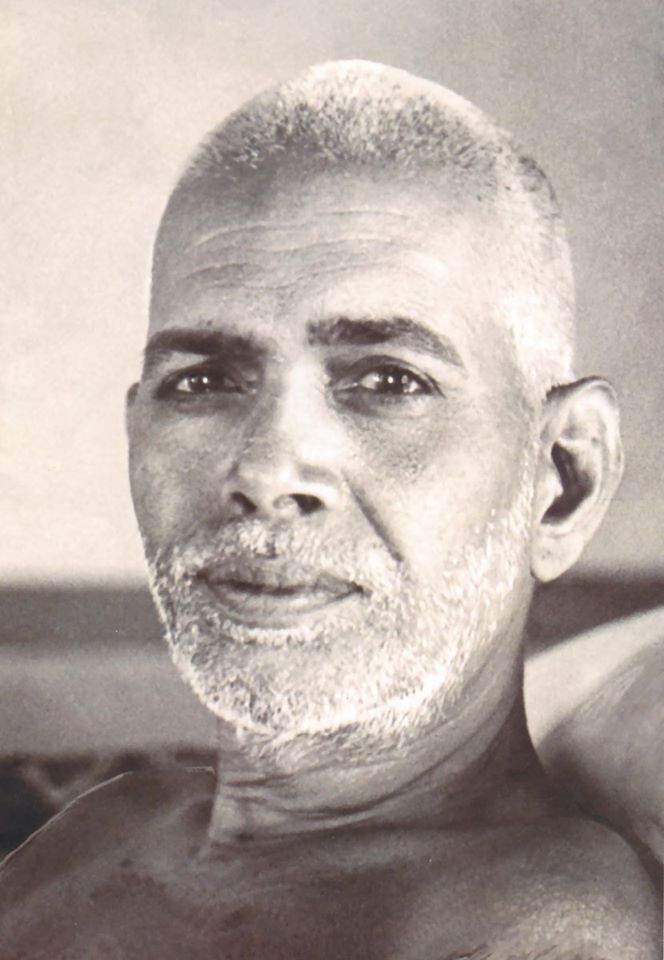
-
Navamani Malai 1879-1950 Bhagavan Shri Ramana Maharshi of Arunachala
[Guru Mahadasha] = [age birth until age 2.1]
-
[Guru-Kumbha] = [Guru in bhava-3]
Shani-4 parivartamsha Guru-3]
30-Dec-1879 = Earth-birth in Tiruchuzhi [Tiruchuli] Virudhunagar, Madras Presidency, British India [9.534818 N 78.200769 E] Guru-Rahu chidra-dasha
[Shani Mahadasha] = [age 2.1 until age 21.1]
-
[Shani-Meena] = [Shani in Bhava-4] + + [Shani-4 parivartamsha Guru-3]
18-Feb-1892 [RM age 12] grieved the unexpected decease of father * Shani-Surya bhukti - Surya-yuti-Rahu
1892 [RM age 12] following the unexpected death of his father, the family disperses to several locations * Shani-Surya bhukti - Surya-yuti-Rahu
1896 [RM age 17] attracts first disciple * Shani-Rahu bhukti
1896 [RM age 17] near-death-experience exposes life-force current [avesam] recognized as true-self and Ishvadevata [ishwara] shani-Rahu bhukti * dharmesha Surya-yuti-Rahu-1 self- wisdom
[Budha Mahadasha] = [age 20.2 until age 36.2]
-
[Budha-Vṛścika] = [Budha in bhava-12] + [Jyeṣṭha-Budha-yuti-Shukra-Magha]
1902 [RM age 23] first recording of the method of self-inquiry * Budha-Budha svabhukti * Budha writing, documentation
[Ketu Mahadasha] = [age 36.2 until age 43.2]
Aug-1916 until Sep-1918 Janma Sade-Sati Karkata
- [8 cataclysmic upheaval, sudden unexpected identity change, healing transformation, revolutionary recycling energies, entrancement, mystery, discovery, initiation, secrets]
- [age 34-37]
19-May-1922 [RM age 43] grieved the bio-decease of devoted mother * Ketu-Guru bhukti * matrimaraka Shani rules 7th-from-Chandra
1922 [RM age 43] following mom's decease, beginning encampment near her tomb. The camp becomes Ramanasramam * Ketu-Guru bhukti [Shani-4 parivartamsha Guru-3] Shani-4 fixed encampment
[Shukra Mahadasha] = [age 43.2 until age 63.2]
-
[Shukra-Vṛścika] = [Shukra-12] + [Magha-Shukra-yuti-Budha-Jyeṣṭha]
1934 [RM age 55] English-language biography [hagiography] of RM brings international renown * Shukra-Rahu bhukti - Surya-yuti-Rahu -` personality
[Surya Mahadasha] = [age 63.2 until decease age 70.2]
-
[Surya-Dhanus] = [Surya in bhava-1] + [Pūrvāṣāḍhā-Surya-yuti-Rahu-Pūrvāṣāḍhā]
- [8 cataclysmic upheaval, sudden unexpected identity change, healing transformation, revolutionary recycling energies, entrancement, mystery, discovery, initiation, secrets]
- [age 34-37]
Feb-1949 [RM age 70] excision of cancerous arm skin performed by ashram physician. Physician preferred to save the life by amputating the arm, but RM refuses to amputate * Surya-Budha bhukti * rogesha disease Shukra-yuti-Budha * Budha rules Ketu excision, amputation * dvithya Sade-Sati
Dec 1949 [RM age 70] second and third tumor surgeries, but these fail to prevent the merciless advance of the disease * Surya-Ketu bhukti * Ketu excision, amputation * dvithya Sade-Sati
14-Apr-1950 [RM age 70] blessed liberation from the Earthen-body, via cancer * Surya-Shukra bhukti [Shukra-yuti-Budha] Maraka Budha rules Ketu-7
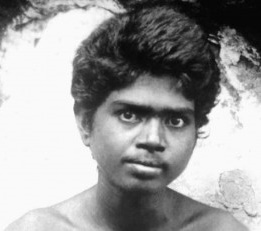 Distinctive features of the nativity
Distinctive features of the nativity
-
Navamani Malai 1879-1950 Bhagavan Shri Ramana Maharshi of Arunachala
[Sparkling Splendid Surya]
pitri-karaka [father] -- jyoti-karaka [light]
[philosophical-doctrinal dharmesha for Dhanus - Haya indriya-lagna]
- check Guru + Guru-drishti to source Surya's theoretical intelligence, dogmatic certainty, optimistic self-confidence
[bright center of belief dharmesha]
[charming certainty of ideological-theoretical principles]
[radiant icon of patriarchal philosophy]
[righteously certain indoctrinator]
[sparkling display of optimistic worldview]
[self-focused faith in divine identity]
[dramatic embodiment of solar-root understanding]
[radiantly energized father may be confident celebrity, patronizing professor, spectacular preacher, self-referential priest]
...
[dramatizing-entitled Pūrvāṣāḍhā-1] = [navamsha Surya-Simha] intuitively confident theatrical romantic idealizing display
+ [Pūrvāṣāḍhā-Surya-yuti-Rahu- Pūrvāṣāḍhā]
-
[Surya-Dhanus] Aditya - the unsplit, undivided * brightly charismatic confidence of Center-stage Surya radiates through the preaching-teaching philosophical rashi of Brihaspati
-
[Surya in bhava-1] center of attention * bright embodiment * intelligence for competition * focus on appearance * genius for innovative self-expression * athletic entitlements * glittering warmth of personal charm * sparkling star of kinetic vitality * self-referential father may be icon of entitlement, brilliant competitor, political pioneer
-
[Surya-yuti-Rahu] confidently opportunistic * bright mesmerizer * passion for creative culture-mixing * boundary-breaching entitlements * craves important center-stage roles * ambitious father-figure * adventurously aligned with the spiritual rays of the Sun * radiantly risk-rewarding
OUTCOMES - MAGNIFICENT MARTANDA
self-reflexively confident, bright Earthen-body aura, regal style of movement, embodied intelligence, radiantly kinetic, politically competitive, splendidly innovative [Surya in bhava-1] rules
-
9-ideology , paradigm of belief, profession of faith, principled convictions, higher understanding, father-figures, priestly patronage, preaching, patriarchal entitlements, philosophical convictions, theory, public spiritual guidance, celebrated doctrines, sangha, sacred teachings, credenda, globalism, dharma, worldview, weltanschauung, mother's health
CAREER - SPARKLING SURYA
+ Surya-Dhanus [dramatizing-entitled Pūrvāṣāḍhā-1] + [Surya-yuti-Rahu]
dharmesha [Surya in bhava-1] = Fame for
- spiritual radiance of personal truth,
- self-directed philosophy,
- confidence of opinion,
- independent from: the Math system,
- self- inquiry method .
- Surya's independence is amplified by Rahu
FATHER
Dad = Sundaram Iyer [1848-1892]
Dad worked as a special pleader within the English-law portion of the court system. [Surya-yuti-Rahu exotic jurisprudence.] Surya
https://en.wikipedia.org/wiki/Special_pleader
[musical theatre Pūrvāṣāḍhā-1] = bargains, legal appeals for relief, attorney, equity
When young Venkataraman was age 12, dad died suddenly.
[Comfortable Caretaking Chandra]
matrikaraka [mother] -- garha-karaka [village]
= [svakshetra] = [mysterious-initiatory randhresha for Dhanus indriya-lagna]
[comfortable with emotionally disruptive change]
[sympatheticly pushes into rejuvenating randhresha crisis]
[sentimentally attuned to ancient initiatory cycles]
- [folk-reputation 10th-from-Chandra = heroic politics, warlike drama, conquest entitlements, championship gambling Mesha-5]
[habitual rhythms stabilize hidden feelings]
[familiar places give impetus for emotional healing]
[needs to feel deep watery immersion in catalytic rebirth randhresha ]
[soothed by sudden maternal revelations]
[volatile caretaking impulse may suddenly stop-and-start]
[undulating protector of local healers randhresha]
[intuitive cultivator of ancestral secrets]
[eruptive mood cycle spectrum from soothing shelter to terror]
[sensitively responsive to cultural shocks]
- [at some juncture in the lifespan, previous ethnic rituals utterly die, catalyzing sudden rebirth into new healing rhythms]
[traumatized gardening mother may be inscrutably moody]
[environmentalist mother's dwelling may suddenly fluctuate]
[householder mother may alternate as disguised farmer, mysterious ritualist, unpredictable custodian]
...
[anchoring-rhythmic Punarvasu-4] = [vargottamsha] [navamsha Karkata Chandra] intuitively sensitive routinized customary ancestral protective caretaking
= [Pushkara pada]
-
[Chandra in Punarvasu] soothed by restoration of abundance * protectors of sensitive wise instruction * needs descriptive explanation
-
[Chandra-Karkata] comforted by maternal soothing * settled into tidal rhythms * needs to protect
-
[Chandra in classroom-8] comfortable with crisis * familiar with catastrophe * unpredictable mother * feels the pulse of cyclical rebirth * soothed by secrecy * consoled by calamity * sensitive to danger * revolutionary sentiment * accustomed to frequent upheaval * seeks deeply rhythmic initiation * acculturated to masked exploration * occult sensitivities * needs eruptive energies * nourished by non-disclosure * emotionally attuned to trauma * undulating shakti-shocks * mother may be a mystic, healer, concealer, agent of disguise
OUTCOMES - ANCESTRAL SOMA
sentimentally undisclosing, emotionally secretive, caretaker in dangerous situations, needs chaotic feelings, securely grounded through disastrous upheaval, anchored into sudden emergency response, sensitive to disguised dependencies, protected by camouflaged assets, sense of having hidden empowerments [Chandra in classroom-8] rules
-
8-unexpected eruptions of regenerating force, occult initiation, mystical revelation, shocking intervention, opaque empowerments, invasive surgery, intensive healing, evolution, violent explosion, sudden identity change, rejuvenation, recycling, rebirth, hidden assets, upheaval, undisclosed secrets, transformative events, discovery, in-laws of first marriage, health of younger sibling-cousin
CAREER - CARETAKING CHANDRA
- [folk-reputation 10th-from-Chandra = heroic politics, warlike drama, conquest entitlements, championship gambling Mesha-5]
MOTHER
Mom = Azhagammal Iyer [1864– 1922].
As the Ramanashramam was developed, mom managed the kitchen. She became an iconic spiritual figure within the burgeoning community.
[Chandra in classroom-8] suggests that mom had a mystical persona
MARRIAGE emotional support expectations in partnership
7th-from-Chandra in classroom-8
Bhava-2 Makara ruled by Shani-4
RM did not marry formally. Ketu-7 and yuvati-pati Budha-12 would suggest a strong preference for independence within relationships.
However, like all spiritual aspirants, he may have acknowledged a primary relationship with his Ishta-devata. Shani-4 indicates the elemental spirits of a place. He was place-grounded.
[Competitive Champion Kuja]
bhratru-karaka [brother] -- virya-karaka [virility]
= [svakshetra]
[witty-creative vidya-pati for Dhanus - Haya indriya-lagna]
[contemplative-clairsentient vyaya-pati for Dhanus-Haya indriya-lagna]
[vigorously competitive political campaigns]
[energetically kinetic stage performance]
[dynamic theatrical enactment of championship]
[expresses dramatic creativity with contemplative vyaya-pati energized innovation]
[promotes demonstrations of pioneering action]
[praised for heroic pro-active athletic movement]
[physicalized drive to win while playing romantic poetic games]
[may battle over celebrity entitlements vidya-pati with one's own children or students]
...
[trading-arranging Bharani-3] = [navamsha Mangala-Tula] intuitively competitive forward-pushing design arrangements equity
-
[Mangala-Mesha] vigorous pursuit of dominance * straightforward dynamic actions * competitive winner * propulsive battering weaponry * push toward conquest * pioneering vitality * hot yang-energy * thrusting force * forward-driving movement * champion of innovation
-
[Mangala in bhava-5] drive toward creativity * pursues games of chance * pioneering speculation * dynamic style of flamboyant display * competitive children * energized by intellectual gambles * political conquests * productive intelligence * push toward celebrity * champion of romance * promotes choice-making *propulsive genius * actively charming
OUTCOMES - MOVING MANGALA
energetic center-stage performer, brightly kinetic dramatist, champion of romantic pursuit, vigorously gambling, dynamically creative, competitively political, sparkling entertainer, pioneering displays, dominant winner in gambling and games [Mangala in bhava-5] rules
-
5- Politics, center-stage roles, theatre, demonstration, display, charming brilliance, genius, poetry, choice-making, showmanship, gambling and gamesmanship, romantic idealism, creativity, fashion-shows, flamboyance, celebrity entitlements, confidence, artistic performance, drama, children, financial speculation, intelligence, entertainments, fun
-
12 enclosures, the bed, fantasies, privacy, interior spiritual guidance, clandestine undertakings, intuitive awareness, non-linear conceptual undertanding, concealment, seclusion, invisibility, dissolved identity, meditation, contemplation, dreamworlds, astral plane, imaginary scenarios, sanctuary sleep, distant lands, distress of the avowed partner
CAREER - COMPETITIVE KUJA
Romantic, adventurous, self-central pioneering [Mangala in bhava-5] occupies the high-visibility, iconic 10th-from-Chandra
[Busy Bantering Budha]
jamayah-karaka [sibling] -- sandesha-karaka [message] -- shisya-karaka [student]
[balancing-bargaining yuvati-pati for Dhanus-Haya indriya-lagna]
[dutiful-commanding karmesha for Dhanus - Haya indriya-lagna]
- check Kuja + Kuja-drishti to source Budha's penetrating analysis, rejuvenating discourse, narrative of shocking discovery
[imaginative mystical narrative of interior transformation]
...
[populist-community Jyeṣṭha-3] = [navamsha Budha-Kumbha]
+ [Jyeṣṭha-Budha-yuti-Shukra-Magha]
[ātmakāraka explanation, description, instruction, song-writing, definition, discussion]
-
[Budha-Vṛścika] secretive communications * articulation of transformative process * emergency pronouncements * delivers messages about dangerous situations * describes mystical initiation * discusses undisclosed information * mysterious handcraft * articulately defined masking * gives instruction for penetrating procedures * expertly detailed disguise * hands-arms-shoulders make occult gestures
-
[Budha in bhava-12] narrative of mental sanctuary * talks about quietude * commerce of the hermitage * discusses interior spiritual guidance * speaks from invisible location * instructions on reflective contemplation * detailed descriptions of intimate privacy * diagrams the astral inner terrain * explainer of quiet prayer * imaginative siblings * communication with distant worlds * delivers information about clairsentience and claircognizance * skillfully defines the dreamworld * logical visions
-
[Budha-yuti-Shukra] explainer of balanced arrangements * diplomatic conversations * parity-seeking discussions * manual adjustments * enjoys words * sweet descriptions * delivers instruction about relationships * articulator of equity in agreements * message of fairly bargained contracts * skilled in songwriting * talkative sister-cousin-cohort * detailed lyricist * attracts chatty partners
OUTCOMES - BANTERING BUDHA
abstractly conceptual announcements, backchannel communication, private discussions, talks about intuitive meanings, clandestine projects, enclosed messages, dissolved information, specifically fantasizing, imaginative dialogs, invisible transactions, questioning research, interior translating Budha in bhava-12] rules
-
7-covenant, promise, trust, contractual relationships, social justice, advocacy, legal judgments, lawcourts, appeals, representation, equity, diplomacy, partners, justice, marriage, legal and formal partnerships, negotiation, alliance-crafting, match-making, fair arrangements, even deals, advocacy, trading, bargaining, brokerage, haggling, go-between, middleman, meddler
-
10-career, profession, dignity, regulatory roles, governance duties, social authority, symbolic recognition, iconic visibility, leadership responsibility, top status, reputation, commanding positions, honor, high regard, public respect, executive power, elite rank, lawful imposition, organizational director
CAREER - BUSY BUDHA
[Generous Growing Guru]
dhava-karaka [husband] -- bahuta-karaka [variety]
[energizing-identifying lagnesha for Dhanus - Haya indriya-lagna]
[homebound-anchoring bandhesha for Dhanus - Haya indriya-lagna]
- check Shani + Shani-drishti to source Brihaspati's systematic expansion, distributive inclusiveness, community-connected abundance
[multiple broadly-connected businesses]
[many community-linked doctrinal announcements]
[numerous marketplace publications]
...
[imaginative-guided Shatataraka-4] = [navamsha Guru-Meena]
+ + [Shani-4 kahala-parivartamsha Guru-3]
-
[Guru-Kumbha] much networking * hope for the future * many marketplaces * optimistic about big associations * permission to connect * scientific beliefs * doctrine of economic linkage * propagation of interwoven arrays * distributed guidance * expands the scope of social participation * multiple communities * diversity of friendships
-
[Guru in bhava-3] many messages * extensive commerce * many photographs * numerous publications * several collaborators * multiple transactions * many tours * frequent business trips * many sales * numerous discussions * much detailed interaction * extensive planning operations * variety of ensemble performances * evangelistic growth * so many meetings * patron of communications technologies * in a wifely nativity, husbandly-companion may be jovial businessman, cheerful writer, optimistic announcer
OUTCOMES - GENEROUS GURU
expansively describing, abundantly publishing, multiple teamworks, numerous projects, optimistic manager, many itineraries, broad-scope of collaborative interaction [Guru in bhava-3] rules
-
1- distinctive attributes of personality, dense material incorporation, individual personification, earthen embodiment, physical integrity, kinetic energy, dance, style of movement, athletic prowess, muscular mobility, unique character, kinetic vitality, circumstances of birth, forward push, tangible appearance, coherent social identity
-
4 cultural foundations, The Founders, property boundaries, way of Life, protection, defense , homeland, household, routines, rituals, mother, parents, customary rhythms, caretakers, socialization schooling, gardens, waterways, transportation, housing, social security, sense of place, environmentalism, citizenship, belonging, ethnic basis, ethno-religion, patriotism, real-estate, farming, land-ownership, burial, predictability, health of the elder sibling
CAREER - BENEVOLENT BRIHASPATI
[Shani-4 kahala-parivartamsha Guru-3]
[conceptual-guided Varuna-4] resides in the emotionally turbulent, perpetually transformative, trauma-inducing, discovering, revealing, danger-seeking 8th-from-Chandra
No-Death philosophy of terminal illness
Guru-Kumbha indicates expansion of the skin
Kahala-parivartamsha yoga between lagnesha Guru-3 ++ Shani-4 = many publications of a proletarian nature. Without being a career writer, rM was a published author due to an army of scribes and visitors [3) who reported his comments in various media.
Most of the writing was done not by RM [who had a minimal formal schooling Shani-4 and was only functionally literate] but rather by the many scribes [3] who recorded RM's explanations, descriptions, and instructions [3].
[Sweetly Suave Shukra]
svadu-karaka [sweet] -- kalatra-karaka [wifely companion]
= [Harsha Yoga]
[inimical-medicating rogesha for Dhanus - Haya indriya-lagna]
[friendly-economic labha-pati for Dhanus - Haya indriya-lagna]
[interpersonal misdoings remain pleasantly invisible]
[private meditation resolves most conflicts]
...
[established-localized Magha-4] = [navamsha Shukra-Karkata] intuitively balanced, bound-into-place, ethnic-rhythm, routinely habitual relationships
+ [Magha-Shukra-yuti-Budha-Jyeṣṭha]
-
[Shukra-Vṛścika] appreciation of penetrating discovery * likes mysteries * attracted to danger * aesthetic of exploration * pleased by covert power * prefers a healing partner * undisclosed arrangements * phoenix aesthetic of rejuvenation * beautifying rebirth * negotiates pleasantly in threatening conditions * seeks equity during sudden upheavals * balanced approach to emergencies * enjoys hidden alliances * conducts secret diplomacy
-
[Shukra-12] seeks imaginative pleasure * private sensuality * values spiritually guided partnership * gracefully intuitive feminine-figures * agreeable sleep * visions of contemplative harmony * enjoys beautiful sanctuaries * aesthetic designs to adorn the feet * likes meditations * appreciation of Other Worlds * attracted to quiet spaces * for husbandly nativity, wifely-companion may be contemplative-foreign-isolated-researcher
-
[Shukra-yuti-Budha] sweetened messages * gracious explanations * talented in singing-songwriting * articulate negotiations * advocates for reasoning process * talkative feminine-figures * pleasant conversations * bargaining for business * sibling-cohort collaborative harmony * enjoys the company of students * detailed contracts * prefers logical arrangements
OUTCOMES - SWEETENING SHUKRA
pleasantly meditative, aesthetically contemplative, privately sensual, seeking balanced invisible arrangements, musically intuitive, harmoniously researching, prefering luxurious bedrooms, wealth-via-contractual agreements, attracted to imaginative companions [Shukra-12] rules
-
6-ministries of service, dehumanization, misconduct, war, jail, slavery, pollution, argumentation, healthcare workers, ailment, injury, medical treatment, hypocrisy, crime, cheating, animosity, toxins, complaints, accusation, litigation, blaming, scapegoat, aid workers, helpers. imbalanced conditions, injustice, betrayed promises, servants, laborers, hostility, animosity, disagreement, dehumanization
- 11-fruitful revenues, interconnected income, profits, material achievement, social networking, friendships, community linkage, fan-clubs, mass participation gatherings, collectivism, marketplace gridworks, distribution, association, populism, economic systems, fundraising, gains-and-goals, awards for work accomplished, health of the enemies
CAREER - BRIGHT BHRIGU-TANAYA
[Sober Structural Shani]
duro-karaka [endurance] -- jara-karaka [Jahre, years]
[acquisitive-evaluative dhana-pati for Dhanus - Haya indriya-lagna]
[collaborative-communicative sahaja-pati for Dhanus - Haya indriya-lagna]
- check Guru + Guru-drishti to source Shani's visionary legalism, dreamlike strictures, vaguely-conceptual systems
[rigidly conceptualized anchoring routines]
[Maintains the conventional seasonal sleep cycles]
[limited property lakes and ponds]
[obligation to care compassionately for elderly parents]
[responsible for maintaining conversational sahaja-pati familiarity with older dreamworlds]
[structured assets dhana-pati of rainwater-containment and fish-farming]
[must establish minimal home quietude]
[orderly household resists excesses of ancestral land spirits]
[staunch protection of local watery phantoms]
[cautiously clairsentient hardworking mother may be strict yet imaginative educator, visionary home-based traditionalist dhana-pati , disciplined intuitive guardian]
...
[philosophical-preaching Revatī-1] = [navamsha Shani-Dhanus]
+ + [Shani-4 parivartamsha Guru-3]
-
[Shani-Meena] oppressive dreams * socially responsible imagination * fear of vast waters * required immersion * must use symbolic images * aging affects the bedroom * structural compression upon aching feet * strictly imposed sanctuary * endures proletarian prayer * slow elder diviners * limited access to ancient ancestor guides * pragmatically constrained intuition * must sustain the astral resonance * scarce contemplative resources * maintainer of old interior visions
-
[Shani in Bhava-4] steady time-structured life foundations * must sustain the cultural roots * required to defend boundaries * grim determination to provide security * dry stony gardens * pessimistic schoolteachers * judgmental mother * proletarian childhood * normalized parenting * orderly conventional education * caretaker's fatigue * chronic household scarcity * old folk customs * resists domestic innovation * must protect old routines * elders maintain the ancient ritual austerities
OUTCOMES - STRUCTURAL SHANI
strictly boundaried, regulatory stability, orderly maintenance of cultural foundations, The Founders, formally imposing ethnic habits, lawfully localized, seriously customary, responsibly parenting, conventionally patriotic, stubbornly respectful of Old Ways [Shani in Bhava-4] rules-
2-acquisition, family legacy, tradition, language-lexicon, preserved memory, banking, collections, entreasurement, herd-hoard, treasury containment, financial capital, accrued amounts, asset evaluation, knowledge of history, speech-song, heritage values, color-sound, arts-and-music, face-voice-eyes-teeth-mouth-hair, genetics, stored resources, health of the father
-
3-communications, messaging, sermons, scripts, radio-television, media-products, Writing and Publishing, letters of correspondence, announcements, planning, schedules, sales, marketing, documentation, reporting, cohort, entourage, committee-work, iterative stepwise process, manufacturing, commercial business, instruction, explanation, discussion, diagrams, labeling, event management, signage, training, itinerary, tours
CAREER - SOBER SHANI
-
Ramanashram , various encampments, building projects, infrastructure which arose surrounding his sitting places, drilling his psychic tap-roots into Earth vibratory patterns, houses of worship, energetic rituals
Navamani Malai 1879-1950 Bhagavan Shri Ramana Maharshi founded [4] a famed ashrama
[4] in Arunchala that came to provide housing [4] for a devoted international spiritual community.
RM within a small local area, rM frequently moved from place [ruler of 4 = multiplier Guru in dissolving 12th-from-4] to place [4] tapping into various energy columns [4 infrastructure].
Where he took the seating [4] there formed a settlment surrounding him. The lifestyle of this internationalized village followed local customs of food, dress, worship, and other routine behaviors [4 local customs, habits, meals].
[Risk-rewarding Rāhu]
rajyalobha-karaka [ambition] -- picchala-karaka [slippery]
[for Dhanus - Haya indriya-lagna]
[Rahu-1 casts passionately unique individualizing drishti into 5-7-9]
- check Guru + Guru-drishti to source Rahu's apparently generous, mirage of philosophical conviction
[entrancing cult of wisdom-preaching personality]
[identified with prestige of righteous beliefs]
[vital embodiment of fascinating divine inspiration]
[appears as a uniquely special doctrinal guide]
[potential for fabulously or fraudulently exaggerated omniscience, in matters of physicality, embodiment, innovation, style of movement, athletic prowess, vitality, unique identity, personality integrity, or conditions of birth]
...
[secretive-revealing, disguising Pūrvāṣāḍhā-4] = [navamsha Rahu-Vrischika]
+ [Pūrvāṣāḍhā-Rahu-yuti-Surya- Pūrvāṣāḍhā]
-
[Rahu-Dhanus] shimmering illusion of wisdom * craving for philosophical principle * mirage of generous patronage * extraordinary theory * extravagant preaching * unorthodox approach to higher truth * mask of global humanism* fascinating doctrine * over-reaching catechisms * fabulous proselytism * seeks special importance via apparent [but perhaps not authentic] attributes of philosophical belief * seeks privilege via guru-roles
-
[Rahu in bhava-1] passion for prestige appearance * in svabhava of Competitive Kuja, the Shadowy Specter seeks privilege via glamorous physical visage * extraordinary athletic action * outsider who cleverly insinuates into a noble identity * smoky, oily aura * desires competitive advantage * exceptionally recognizable embodiment * exhilarating force of nature * thrilling champion of non-standard lifestyles * social mobility sought via dynamic movement * entranced by one's own personality * innovative behavior challenges existing norms * culturally mixed self-image * embodies exciting new energies * self-promotion via blood-and-birth * double agent * over-reaching ambition for empowered individuality * craves personal importance * trespasses cultural limitations of race-class-creed-gender * fascinating figure * may represent a cult of personality
-
[Rahu-yuti-Surya] amplified ambition for center-stage roles * magnified confidence * passion for exotic display * trickster with dramatic flair * opportunistic father * creative pursuit of social mobility * fascinating [but perhaps illusory] appearance of exceptional intelligence * thrilling political genius * hypnotic charm * seeks privilege via bright celebrity * sparkling center of cross-cultural pollination
OUTCOMES - RISK-REWARDING RAHU
[Collapsing unshackling Ketu]
kavandha-karaka [headless] -- chidra-karaka [gaping] -- vasana-karaka [vacuum]
[for Dhanus - Haya indriya-lagna]
- check Budha + Budha-drishti to source Ketu's spacey sentences, vague instructions, disinterested discourse
[absence, disappointment, disorientation within fairly-bargained, process-managing relationships]
[dispersed engagement with business partnership]
[dissolution of commercial advocacies]
material relationship to spouse, especially but not exclusively the first spouse, may mentally or communicatively dissolve. The spiritual relationship remains intact. Outcome depends upon any other graha-in-7]
[surrenders useless publishing contracts]
[dispassionately forgives the trespass of disoriented chattering companions]
[abandons unsustainable detailed deals]
[absent from empty information-exchange alliances]
[provisional administrative arrangements]
[disregards obsolete explanatory discourse conventions]
[eccentric clerical-secretarial communications]
[may be passively fixated upon ambitiously principled, opportunisticly inspirational, fascinatingly dogmatic Rahu-Dhanus-1 fabulous physical embodiment]
...
[heritage-musical Punarvasu-2] = [navamsha Ketu-Urisha] witnessing observer of sound, music, historical values, legacy stories, conservation of traditional language
-
[Ketu-Mithuna] dissociates from conversation * incomplete messages * explains the ineffable * empty instructions * absent from discussion * martyr to commerce * wandering mentality * fragmented signals * not limited by conventional talk * dialog of liberation * ignores normal business * forgives the sibling-cohort * incoherent scripts * releases a plant-green cloud of explanatory gestures into the misty abyss
-
[Ketu in classroom-7] equably ambivalent toward agreements * absentee advocates * disregards contractual loyalties * disinterested in mutuality * wanders from the middle-balance * empty arrangements * irrelevance of equity * surrenders alliances * abandons the usual covenants * ignores advice * incoherent promises * liberation via surrendered negotiations * unless other graha in 7, may prefer to live free from partners
OUTCOMES - EVACUATING KETU
[Ketu in classroom-7] often disregards marriage arrangements, including the marriage between body and soul
Navamani Malai 1879-1950 Bhagavan Shri Ramana Maharshiobservers of the guru reported several occasions of fits [generally diagnosed as epileptic seizures] during which his life-force energy would suddenly halt and vital signs cease.
RM was partially able to observe this process consciously, and apologized for scaring people who thought he was dead [7]. Most of his adult life was lived in a dissociated state [Ketu], which helped to reduce the difficulties of the school-of-earth body-soul pairing.
NDE reports
Shri Ramana of Arunachala was said to be fully conscious at the time of mahasamadhi- dematerialization from cancer, rM age 70. He had reported a number of near-death experiences [NDE] throughout his life, recorded by his biographers.
all that is true, all that is noble,
all that is just and pure,
all that is loveable and gracious,
whatever is excellent and admirable -
fill all your thoughts with these things."
~~ Paul of Tarsus, Epistle to the Philippians 4:8
[How Readings Work] = [Sample Sacred Jewels Ratna Recommendation] = [Seva]
 file update =
17-Nov-2025
file update =
17-Nov-2025
[Copyright 1994-2094 by Barbara Pijan Lama] = [Contact] = [How to Request a Jyotishavidya Reading]
Barbara Pijan Lama Jyotishavidya Vedic Astrology Surya Sun Chandra Moon Mangala Mars Budha Mercury Guru Jupiter Shukra Venus Shani Saturn Rahu Ketu Graha Planets Dasha Timeline Calendar Nakshatra Navamsha Marriage Children Treasury Career Spiritual Wisdom Cycles of re-Death and re-Birth
The information on barbarapijan.com , including all readings and reports, is provided for educational purposes only. Wishing you every happiness and continuing success in studies!
